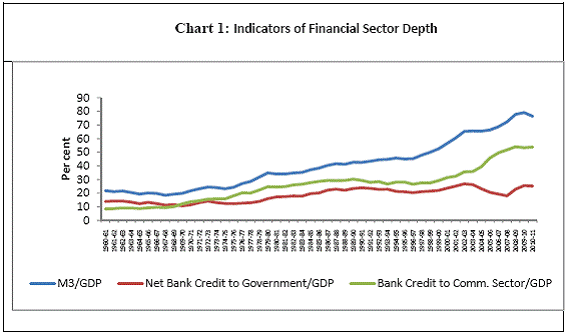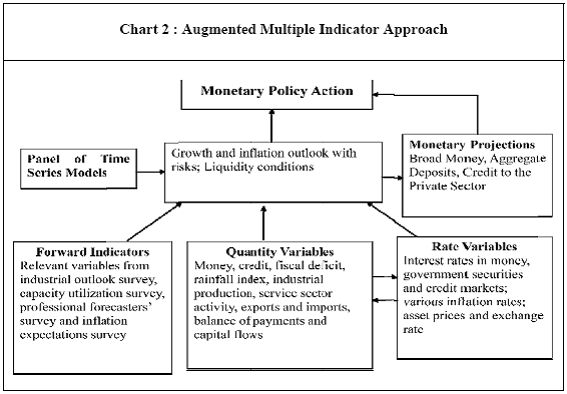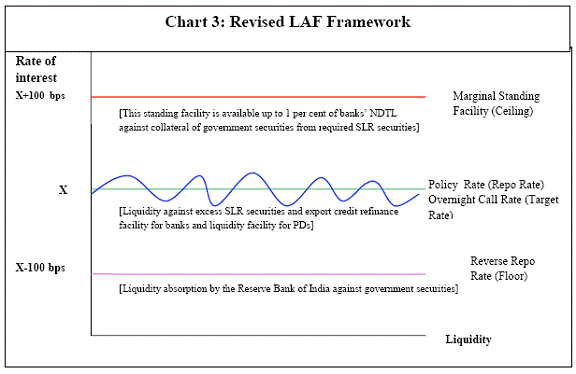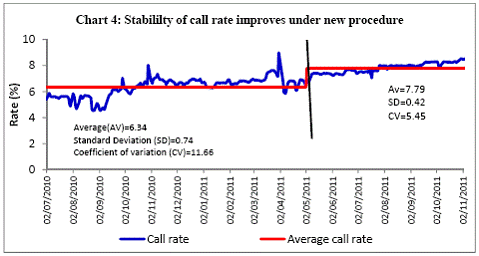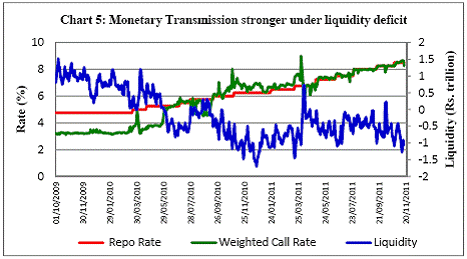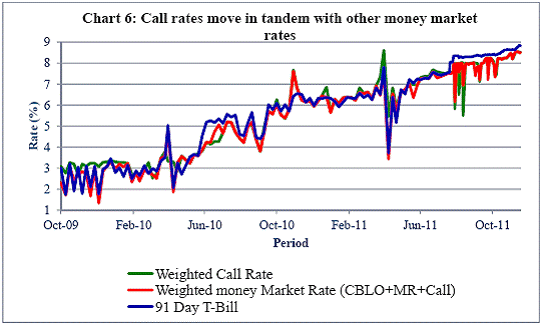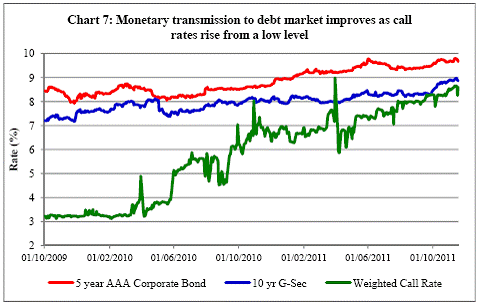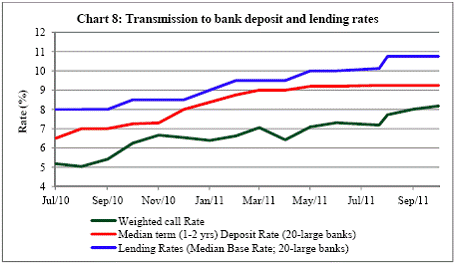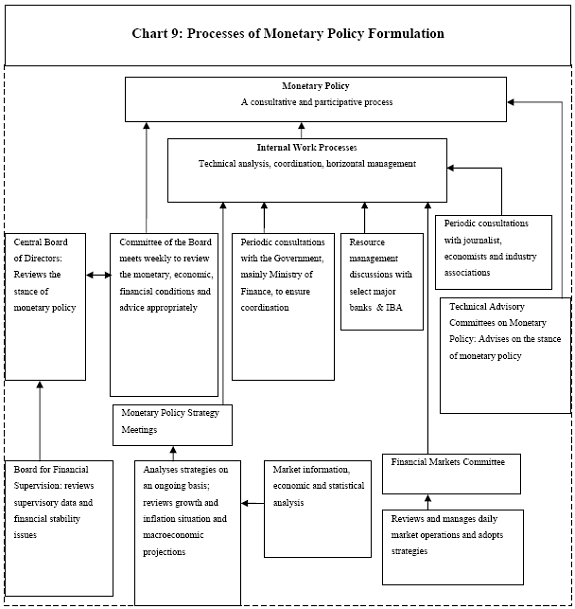 IST,
IST,


Changing Contours of Monetary Policy in India
Shri Deepak Mohanty, Executive Director, Reserve Bank of India
Delivered on Dec 01, 2011
I thank the Royal Monetary Authority of Bhutan and Governor H.E. Daw Tenzin for inviting me to address such a distinguished gathering. I thought of speaking on monetary policy in India for four reasons. First, the currencies of Bhutan and India, i.e., Ngultrum and Rupee are closely linked. Hence, monetary policy developments in India have implications for monetary policy in Bhutan. Second, in October 2011, the Reserve Bank deregulated savings deposit interest rate of banks dismantling the last vestige of interest rate regulation. Earlier we completed the process of deregulation of lending rates of banks with the introduction of the base rate system in July 2010. Third, in May 2011 we also modified our monetary operating procedure with a move to a single policy repo rate to unambiguously signal the stance of monetary policy. Fourth, we are also addressing the challenge of near double-digit inflation for almost two years now. These developments obviously are of some interest in Bhutan given the close interlinkages of our currencies. I will begin my presentation by briefly describing the objectives and framework of monetary policy before coming to various aspects of implementation and formulation process in India. I will then briefly touch upon on our recent growth-inflation performance. I will conclude by drawing attention to some of the lessons that can be drawn from the recent global crisis for the process of monetary policy formulation. Objectives of Monetary Policy Monetary policy is an arm of public policy. It, thus, has set objectives and priorities, which are derived from the respective mandates of central banks. It ranges from a single objective of price stability, considered to be the dominant objective of monetary policy, to multiple objectives that also include growth and financial stability. In the Indian context, the preamble to the Reserve Bank of India Act, 1934 delineates the basic functions of the Reserve Bank as, “to regulate the issue of Bank notes and keeping of reserves with a view to securing monetary stability in India and generally to operate the currency and credit system of the country to its advantage.” The objectives of monetary policy evolved from this broad guideline as maintaining of price stability and ensuring adequate flow of credit to the productive sectors of the economy. Monetary stability cannot be ensured without safeguarding the purchasing power of the currency. Similarly, the credit system helps foster growth which could reinforce monetary stability. Hence, stabilisation of inflation at a low level and stabilisation of output around its potential level remain the quintessential objectives of monetary policy in most countries. In practice, monetary policy in India endeavoured to maintain a judicious balance between economic growth and price stability. Price stability does not necessarily mean a constant price level, but a low and stable inflation. This is because both high inflation and deflation impose costs on the economy by way of loss of output and misallocation of resources. However, it is difficult to define the precise level of low and stable inflation. In practice, inflation targets range from 2 per cent for developed countries to 3.5 per cent for developing countries which have come to be understood as price stability.1 For India, the Chakravarty Committee (1985) had defined an annual inflation rate of 4 per cent as the tolerable level. In this context, the notion of threshold level of inflation, which is the inflexion point in the growth-inflation trade-off, becomes important. Beyond the threshold, inflation by itself becomes inimical to growth. Recent studies on India suggest that the threshold inflation could be in the range of 4-6 per cent.2 However, inflation threshold need not necessarily be the target of monetary policy. In fact, the inflation objective or the target level of inflation for monetary policy should be lower than the inflation threshold, considering the existence of significant lags in the transmission of monetary policy measures and the costs of inflation. Historically, India has been a moderate inflation country in the context of EMEs and other developing economies. The long-term average inflation rate since 1970-71 till the end of 2000s had remained in a single digit of about 7.5 per cent. In fact, the average inflation during the 2000s was even lower at 5.5 per cent. However, near double-digit inflation persisting since the beginning of 2010-11 has been posing a challenge for monetary policy in India. Notwithstanding this recent inflation upsurge, monetary policy continues to be conducted to condition and contain perception of inflation in the range of 4.0-4.5 per cent. This is in line with the medium-term objective of 3.0 per cent inflation consistent with India’s broader integration into the global economy. Recent global financial crisis has, however, shown that low levels of inflation and high levels of growth do not guarantee financial stability. Accordingly, there is an increasing emphasis that financial stability should also be an explicit objective of central banks besides price stability and growth. In India, however, financial stability was recognised as another important objective of monetary policy much before the crisis. Thus, monetary policy in India has evolved to have multiple objectives of price stability, growth and financial stability. These objectives are not inherently contradictory, but rather they are mutually reinforcing. This is so as price and financial stability are important for sustaining a high level of growth, which is the ultimate objective of public policy. Monetary policy Framework Achieving the monetary policy objectives requires articulation of a consistent monetary policy framework. This becomes necessary as central banks strive to achieve these objectives only indirectly through instruments which are under their direct control. For instance, under the monetary targeting framework, central banks, through the instruments under their direct control such as cash reserve ratio (CRR), tried to influence an intermediate target such as money supply which had a stable relationship with the final objectives of price and output. Monetary policy framework, however, has been a continuously evolving process contingent upon the level of development of financial markets and institutions as also the degree of global integration. In India as in other countries, monetary policy framework has undergone significant transformation over time. India followed a monetary targeting framework with feedback during the mid-1980s to 1997-98 under which broad money was used as an intermediate target for monetary policy. This framework was, however, rendered increasingly inadequate by the mid-1990s due to several developments that took place with economic and financial sector reforms. First, on account of measures undertaken during the 1990s to develop the various segments of the financial market, there was discernible deepening of the financial sector (Chart 1). This significantly improved the effectiveness in the transmission of policy signals through indirect instruments such as interest rates.
Second, with the opening up of Indian economy, increase in liquidity emanating from capital inflows raised the ratio of net foreign assets to reserve money. This rendered the control of monetary aggregates more difficult. Third, there was also increasing evidence of changes in the underlying transmission mechanism of monetary policy with interest rate and the exchange rate gaining importance vis-à-vis quantity variables. Due to these financial innovations in the economy during the 1990s, the stability of the demand function for money came under question. Recognising the challenges posed by financial liberalisation and the growing complexities of monetary management, the Reserve Bank switched to a multiple indicator approach in 1998-99. Under the multiple indicator approach, while broad money continued to remain an information variable, greater emphasis was placed on rate channels for monetary policy formulation. A host of macroeconomic indicators including interest rates or rates of return in different segments of financial markets, along with other indicators on currency, credit by banks and financial institutions, fiscal position, trade, capital flows, inflation rate, exchange rate, refinancing and transactions in foreign exchange available on high frequency basis are juxtaposed with output data for drawing implications for monetary policy formulation. As a result, monetary policy operation became more broad-based on a diverse set of information and provided flexibility in the conduct of monetary management. The multiple indicator approach itself, however, continued to evolve and was further augmented by forward-looking indicators and a panel of parsimonious time series models. The forward-looking indicators are drawn from the Reserve Bank’s industrial outlook survey, capacity utilisation survey, professional forecasters’ survey and inflation expectations survey. The assessment from these indicators and models feed into the projection of growth and inflation. Simultaneously, the Reserve Bank also gives the projection for broad money (M3), which serves as an important information variable, so as to make the resource balance in the economy consistent with the credit needs of the government and the private sector. Thus, the current framework of monetary policy can be termed as an augmented multiple indicator approach as illustrated in Chart 2.
Implementation of Monetary Policy For effective implementation of monetary policy, monetary policy framework needs a supporting operating procedure. An operating procedure is defined as day-to-day management of monetary conditions consistent with the overall stance of monetary policy. Generally, it involves: (i) defining an operational target, generally an interest rate; (ii) setting a policy rate which could influence the operational target; (iii) setting the width of corridor for short-term market interest rates; (iv) conducting liquidity operations to keep the operational target interest rate stable within the corridor; and (v) signalling of policy intentions. As with monetary policy framework, the corresponding operating procedure has also been an evolving process in India. Application of CRR on banks’ liabilities and open market operations (OMO) have traditionally been the instruments of monetary policy. But, with the introduction of liquidity adjustment facility (LAF) in 2004, overnight management of systemic liquidity at desired interest rate emerged as the most active instrument of monetary policy. The LAF was operated through overnight fixed rate repo (central bank liquidity injection rate) and reverse repo (central bank liquidity absorption rate) to provide necessary guidance to market interest rate. However, this procedure had two major drawbacks. First was the lack of a single policy rate. Consequently, the operating policy rate alternated between repo and reverse repo rates depending upon the prevailing liquidity condition. Second was the lack of a firm corridor which often led the implicit target rate (call rate) breaching the upper and lower limits under liquidity stress conditions. Recognising these shortcomings, a new operating procedure was put in place in May 2011. New Operating Procedure The new operating procedure retained the essential features of the earlier LAF framework with the following key modifications. First, the weighted average overnight call money rate was explicitly recognised as the operating target of monetary policy. Second, the repo rate was made the only one independently varying policy rate. Third, a new Marginal Standing Facility (MSF) was instituted under which scheduled commercial banks (SCBs) could borrow overnight at their discretion up to one per cent of their respective net demand and time liabilities (NDTL) at 100 basis points above the repo rate. Fourth, the revised corridor was defined with a fixed width of 200 basis points. The repo rate was placed in the middle of the corridor, with the reverse repo rate 100 basis points below it and the MSF rate 100 basis points above it. The current operating framework is illustrated in Chart 3.
The new operating procedure, by removing some of the major drawbacks in the earlier LAF framework, was expected to improve the implementation and transmission of monetary policy. First, explicit announcement of an operating target makes market participants clear about the desired policy impact. Second, a single policy rate removes the confusion arising out of policy rate alternating between the repo and the reverse repo rates. It also improves the accuracy of signalling monetary policy stance. Third, the institution of MSF provides a safety valve against unanticipated liquidity shocks. Fourth, a fixed interest rate corridor set by MSF rate and reverse repo rate, by reducing uncertainty and avoiding communication difficulties associated with a variable corridor, will help keep the overnight average call money rate close to the repo rate. Improvement in Monetary Policy Transmission As the new operating procedure was implemented just six months ago, it may be too early to draw conclusions regarding its efficacy. However, the experience so far suggests that overnight interest rate has been more stable since its implementation (Chart 4).
The new operating framework presupposes the dominance of the interest rate channel of monetary transmission, which is found to be more effective under deficit liquidity condition. Since its implementation, we have been able to maintain the systemic liquidity in deficit mode. Consequently, the transmission of monetary policy in terms of movement in call money market interest rate has shown improvement (Chart 5).
It has also been observed that money market interest rates are better aligned after the implementation of new operating framework (Chart 6).
Further, better transmission to debt market segment is also evident from closer alignment between rates on debt market instruments and call rate (Chart 7).
The transmission to the credit market is much more complex and occurs through the cost channel. Banks respond to policy changes by altering deposit rates depending on liquidity conditions and credit demand. As the cost of deposits rises alongside money market rates, lending rates respond to policy rate changes with a lag (Chart 8).
Policy Formulation Processes Given the monetary policy framework and the corresponding operating procedure, there is also a process in policy formulation. The process of monetary policy formulation in India had traditionally been largely internal with only the end-product of actions being made public. The process has, over time, become more consultative and participative with an external orientation. The process leading to monetary policy actions entails a wide range of inputs involving the internal staff, market participants, academics, financial market experts and the Reserve Bank Board (Chart 9). Within the Reserve Bank, the work process has been re-oriented to focus on technical analysis, co-ordination, horizontal management and more market orientation. The three concerned research departments – Monetary Policy Department (MPD), Department of Economic and Policy Research (DEPR) and Department of Statistics and Information Management (DSIM) – provide independent technical inputs and assessment in the monetary policy strategy meeting chaired by the Governor and attended by the top management. Given the inherent complexity of macroeconomic management, diversity of viewpoints helps avoid the pitfalls of groupthink. Since banks are the major counterpart of the Reserve Bank, pre-policy consultations through resource management discussions are held with 20 large commercial banks which together account for more than three-fourths of banking business. In addition, in the financial sector, consultations are held with the Indian Banks Association (IBA), urban and rural co-operative bank/credit associations and association of non-banking financial companies. In the real sector, consultations are held with national level trade associations. Consultations are also held with select economists and senior economic journalists to ascertain their reading of the economic situation and policy recommendation.
In keeping with international best practice, the Reserve Bank has constituted a technical advisory committee (TAC) on monetary policy with outside experts, though its role remains advisory. In order to enhance transparency, the deliberations of the TAC and policy recommendations are released to the public within four weeks of such meetings. However, the Governor of the Reserve Bank is the ultimate authority to take decisions on monetary policy matters. There are several other standing and ad hoc committees or groups which play a critical role with regard to policy advice. An interdepartmental Financial Markets Committee (FMC) focuses on day-to-day market operations and tactics on an ongoing basis. The whole range of consultations and technical analysis enable the Governor to make the best possible decision under the circumstances besides enhancing the transparency of the policymaking process. In addition, the Governor and the top management of the bank set out the rationale of policy decisions, through quarterly policy statements, mid-quarter reviews, press interviews and speeches. While monetary policy formulation is a technical process, it has evolved to be a highly consultative and participative process. This not only enhances the transparency of monetary policy but policy decisions become informed with the analysis and viewpoints of the concerned stakeholders. As many outcomes in modern market-based economies are guided by expectations, a consultative process also helps in managing expectations. Growth-Inflation Performance As I mentioned, monetary policy framework in India shifted from a monetary targeting regime to a multiple indicator regime. Such a transition was conditioned by the developments of financial markets, increasing integration of the Indian economy with the global economy and changing transmission of monetary policy. A pertinent question is how did this transition impact economic outcomes, in particular the growth-inflation performance?
From Table 1, two broad trends can be gleaned. First, real GDP growth, on an average, improved over the period and became less volatile. Second, inflation performance had improved significantly in the last decade coinciding with the adoption of multiple indicator approach. However, inflation performance deteriorated in the years 2010-11 and 2011-12 so far. In this context, it is important to recognise that the recent inflation surge has followed the global financial crisis. Managing inflation in an economy which is recovering from a downturn is much more complex because of associated uncertainties than managing inflation under normal conditions. In the initial phase of the crisis in 2007, it appeared that emerging market economies (EMEs) were better positioned to weather the storm created by the global financial meltdown on the back of their substantial foreign exchange reserve cushion, improved policy frameworks and generally robust banking sector and corporate balance sheets. However, any hope about EMEs escaping unscathed could not be sustained after the failure of Lehman Brothers in September 2008 which triggered global deleveraging and heightened risk aversion. Eventually, EMEs were also adversely affected by the spillover effects: first through contraction in world trade and then from reversal in capital flows. India, though initially somewhat insulated from the global developments, was eventually impacted significantly by the global shocks through all the channels – trade, finance and expectations channels. In response, the Reserve Bank swiftly introduced a comprehensive range of measures to limit the impact of the adverse global developments on the domestic financial system and the economy. The Reserve Bank, like most central banks, took a number of conventional and unconventional measures to augment domestic and foreign currency liquidity, and sharply reduced the policy rates. In a span of seven months between October 2008 and April 2009, there was unprecedented policy activism. For example: (i) the repo rate was reduced by 425 basis points to 4.75 per cent, (ii) the reverse repo rate was reduced by 275 basis points to 3.25 per cent, (iii) the cash reserve ratio (CRR) of banks was reduced by a cumulative 400 basis points of their net demand and time liabilities (NDTL) to 5.0 per cent, and (iv) the total amount of primary liquidity potentially made available to the financial system was over 5.6 trillion or over 10 per cent of GDP. The Government also came up with various fiscal stimulus measures. As there was increasing signs of recovery in growth and build up of inflationary pressures emanating from drought and spikes in global commodity prices, exit from the excessively accommodative monetary policy stance began in October 2009 in anticipation of the likely path of the inflation trajectory as also on consideration of its source and composition. The initial rounds of monetary policy response were in the nature of normalisation from an excessively stimulative stance in a non-disruptive manner. The policy response was calibrated to the domestic growth-inflation dynamics. As growth took hold and inflation became more generalised, monetary policy response was strengthened. Initially, monetary transmission was weak as systemic liquidity was in surplus. But once liquidity turned into deficit in July 2010, monetary transmission improved. Since October 2009, the CRR has been raised by 100 basis points. The policy repo rate has been raised by a cumulative 375 basis points. As the liquidity in the system transited from surplus to deficit, the effective tightening has been of the order of 525 basis points. Thus, the cumulative monetary policy action would have the desired impact on inflation. It is expected that inflation would moderate towards the later part of 2011-12 and come down to around 7 per cent by the end of the year. The current monetary stance remains anti-inflationary. Lessons from the Global Financial Crisis As I mentioned earlier, monetary policy evolution is influenced not only by the changing paradigm in monetary economics but also by the developments in the financial market and macroeconomic outcomes. In the event of adverse developments, adequacy of extant economic policies is put to test as was during the recent global financial crisis. Crises are not desirable but they seem unavoidable. They do, however, provide us the opportunity to assess various tenets of extant policy framework. Against this backdrop, let me highlight a few important monetary policy lessons that emerged from the recent crisis. First, the recent crisis has demonstrated that a monetary policy solely aimed at fine-tuning of short-term objectives can pose risks. Before the crisis, monetary policy focused more on short-term demand management while inflation was firmly under control, particularly in the advanced economies. It was felt that fine-tuning of monetary policy on the basis of indicators, such as output gaps and measures of core inflation, led central banks towards excessive ‘short-termism’. This in turn contributed to build up of risks. Thus, policies focused on short-term objectives may not deliver desired economic outcomes in medium to long term. Second, the experience of recent crisis has changed the perception as to how central banks should go about achieving their macroeconomic stabilisation objectives. It has become clear that mandate of monetary policy should encompass macro-financial stability and not just price stability. This has drawn attention to the impracticability of Tinbergen’s rule of assigning one instrument for one objective. In practice, interest rate changes affect financial stability. Similarly, macroprudential tools impact credit growth and hence monetary transmission. Recognition of interaction between interest rate and macroprudential tools becomes critical for the appropriate design of monetary policy. This underscores the importance of close monitoring and analysis of financial system developments so that possible risks can be better integrated into the formulation and implementation of monetary policy. Third, inadequacy of monetary policy instruments in central banks’ operational frameworks was also evident during the crisis. As was seen during initial phase of the crisis, monetary policy framed and implemented via instrument of policy interest rate remained ineffective. Consequently, central banks had to resort to a number other unconventional quantity-based measures to ease financial conditions. Thus, there is a need to broaden the toolkit of monetary instruments. Fourth, though financial frictions play an important role in business cycles, they were not explicit part of the models used for policy analysis by central banks (Mishkin, 2011).3 In most crises, including the recent one, it has been seen that shocks to financial system accentuate information asymmetry and affect policy transmission. Therefore, not only must financial frictions be properly understood, but they should also be built into macro-econometric models that central banks use for forecasting and policy formulation. Fifth, after the crisis, it has been increasingly felt that central banks could better discharge lender of last resort (LOLR) function if they are also vested with micro-prudential regulation and supervision of banks. It could reinforce macroprudential action by eliciting regulatory and supervisory instruments to dampen pro-cyclicality. Sixth, the operating procedures of monetary policy in future would have to take into account the implications of build-up of sovereign debt during the crisis. In this context, Cecchetti (2011) cautions that central bank operating procedures in the future are likely to be more complicated with more tools and more options.4 Monetary and fiscal coordination, therefore, assumes further importance in the implementation of monetary policy. Conclusion Major crises do influence monetary policy formulation as they question the adequacy of the extant practices and belief. In this regard, the issues that I have mentioned are already being widely debated, though a consensus eludes. But one thing is clear: central banks will have to increasingly grapple with the challenge of a broader set of objectives without diluting the objective of price stability. Monetary policy formulation is an ever evolving process both in response to and as a consequence of changes in the financial markets and the real economy. This is a phenomenon we have observed in India in our monetary policy formulation over the years. In the process, monetary policy in India has become increasingly transparent with greater involvement of all the stakeholders for better policy outcome. * Speech by Shri Deepak Mohanty, Executive Director, Reserve Bank of India, delivered at the Royal Monetary Authority of Bhutan, Thimphu on 1st December 2011. The assistance provided by J.K. Khundrakpam and Rajeev Jain is acknowledged. 1 Schmitt-Grohe, Stephanie and Martin Uribe (2011), “The Optimal Rate of Inflation” in Handbook of Monetary Economics, Friedman, B. and Woodford, M. , (eds.). 2 Mohanty et al. (2011), “Inflation Threshold in India: An empirical investigation”, RBI Working Paper Series, 18/2011; Pattanaik and Nadhanael (2011), “Why Persistent High Inflation Impedes Growth? An Empirical Assessment of Threshold Level of Inflation in India”, RBI Working Paper Series, 17/2011. 3 Mishkin, Frederic S. (2011), “Monetary Policy Strategy: Lessons from the Crisis”, NBER Working Paper 16755, February. 4 Cecchetti, Stephen G. (2011), “Monetary policy lessons learned from the crisis and the post-crisis landscape”, Remarks at the SEACEN-CEMLA Conference, Kuala Lumpur, October. |
||||||||||||||||||||||||||||||||||||||||||||||||||||||||||||||||||||||||||||
Page Last Updated on:






